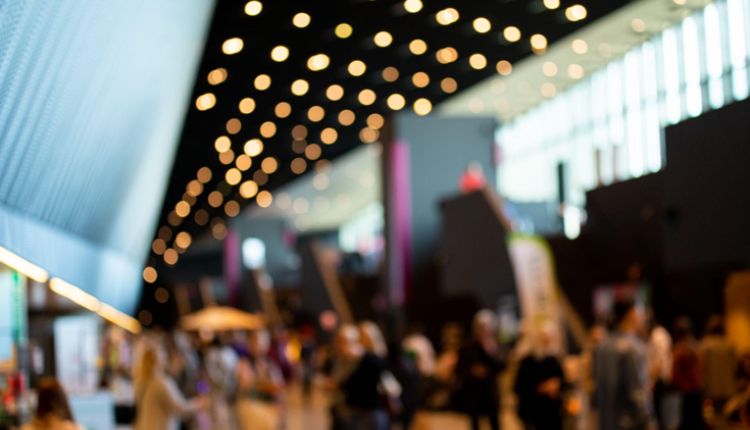You’re not the smallest brand on the trade show floor, but you’re not the biggest either. That middle space can feel oddly invisible. You show up with solid products, a professional team, and maybe even a solid marketing plan — and yet, somehow, the crowd drifts toward flashier displays or well-known names. If you’ve ever watched a stream of attendees walk straight past your booth without a glance, you’re not alone. Standing out in a packed expo hall isn’t just about budget. It’s about making deliberate choices that help your presence click with the people who matter.
Understanding the Pressure of the Middle Ground
Mid-sized businesses tend to walk a tightrope at trade shows. There’s pressure to impress like the major players, but often without the same resources. Meanwhile, newer start-ups can win attention by leaning into their scrappiness or novelty. That leaves mid-tier brands in a strange limbo — expected to be polished but not extravagant, approachable but still authoritative. Add to that the overwhelming noise of the show floor, and it becomes clear how easy it is to fade into the background.
Much of this challenge hinges on perception. When every booth is competing for visual attention, even subtle differences in design or messaging can significantly impact how your brand is perceived. It’s not just what you’re offering; it’s how quickly people can grasp why it matters to them. The issue isn’t always the size of your space. It’s whether that space has been used with clarity and intent.
Why Structure and Presentation Shape Perception
From the moment someone walks past your stand, they’re scanning for cues. Clean lines, clear messaging, and an intentional layout allow them to process information quickly. Without realising it, most visitors decide whether to engage based on visual logic before anyone speaks a word. This is where thoughtful structure does the heavy lifting. Well-placed signage, intuitive flow, and well-lit focal points create an environment that feels easy to step into.
Mid-sized brands that invest in custom exhibition stands tend to have a sharper edge in that first impression window. It’s not about being flashy — it’s about coherence. A tailored stand makes the brand feel stable and established, even if the footprint is modest. There’s a quiet confidence in design that feels specific rather than templated, and that’s often what earns a second look.
Avoiding Common Pitfalls That Dilute Impact
It’s easy to assume that a visually busy booth means more engagement, but in practice, too much clutter repels attention. When every surface competes for focus, people don’t know where to look — or worse, they stop trying. A stand that lacks visual hierarchy or relies heavily on dense signage often gets bypassed, even if the product behind it is solid.
Another common issue is unclear navigation. If attendees can’t tell where to walk, where to stop, or who to talk to, they’ll keep moving. This is especially important in high-traffic environments, where hesitation can lead to congestion. Even minor decisions, such as table placement or wall height, can create unintended barriers. And while giveaways can draw a quick crowd, they rarely lead to meaningful conversations unless tied directly to a product experience or story. Mid-sized teams often have great material — it just gets buried behind too many minor distractions.
Leveraging Interactions Over Giveaways
For many mid-sized brands, real value comes from conversations, not just impressions. While a crowd at your booth might feel like a win, the objective metric is how many of those interactions lead somewhere useful. One way to shift the focus is by designing space around staff-led engagement rather than spectacle. Demos, walk-throughs, or even brief consultations create opportunities for attendees to understand what you do.
It’s not about being overly polished — it’s about being present. A smaller, well-trained team that knows how to guide a visitor through your offering will outperform a flashier setup with no follow-through. When someone leaves your booth with a clear understanding of what you offer and why it matters, they’re far more likely to follow up. And in a sea of branded pens and generic brochures, that kind of clarity sticks.
Designing for Follow-Up, Not Just First Impressions
While the visual impact of your booth is significant, what happens after someone walks away is equally important. Too many mid-sized brands invest in gaining attention, only to let it fade within days. The real opportunity lies in connecting immediate engagement with long-term follow-up, and that starts with how the booth is structured and staffed.
Clear calls to action should be baked into the experience. Whether it’s a QR code that leads to a personalised quote, a short form that feeds into your CRM, or a takeaway that adds value, everything at the booth should point toward what happens next. Small cues, such as consistent branding, staff scripts, or digital sign-up tools, help move interactions from one-off chats to measurable leads. That way, the effort you’ve put into the event doesn’t end when the lights go off — it becomes the start of a well-managed pipeline.
Conclusion
For mid-sized brands competing on packed trade show floors, getting noticed isn’t just about scale. It’s about thoughtful presentation, purposeful interactions, and a plan that extends beyond the booth itself. When each part of the experience feels deliberate, you don’t have to be the biggest name to be remembered.






